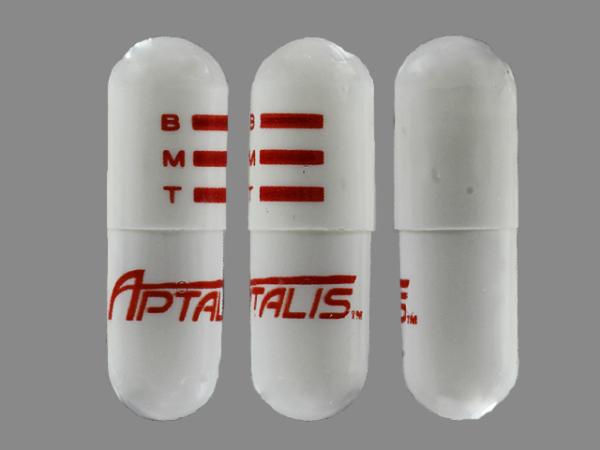Bismuth subcitrate potassium/metronidazole/tetracycline and Alcohol/Food Interactions
There are 4 alcohol/food/lifestyle interactions with bismuth subcitrate potassium / metronidazole / tetracycline.
Metronidazole Food/Lifestyle
Major Food Interaction
Consumer information for this interaction is not currently available.
CONTRAINDICATED: Use of alcohol or products containing alcohol during nitroimidazole therapy may result in a disulfiram-like reaction in some patients. There have been a few case reports involving metronidazole, although data overall are not convincing. The presumed mechanism is inhibition of aldehyde dehydrogenase (ALDH) by metronidazole in a manner similar to disulfiram. Following ingestion of alcohol, inhibition of ALDH results in increased concentrations of acetaldehyde, the accumulation of which can produce an unpleasant physiologic response referred to as the 'disulfiram reaction'. Symptoms include flushing, throbbing in head and neck, throbbing headache, respiratory difficulty, nausea, vomiting, sweating, thirst, chest pain, palpitation, dyspnea, hyperventilation, tachycardia, hypotension, syncope, weakness, vertigo, blurred vision, and confusion. Severe reactions may result in respiratory depression, cardiovascular collapse, arrhythmia, myocardial infarction, acute congestive heart failure, unconsciousness, convulsions, and death. However, some investigators have questioned the disulfiram-like properties of metronidazole. One study found neither elevations in blood acetaldehyde nor objective or subjective signs of a disulfiram-like reaction to ethanol in six subjects treated with metronidazole (200 mg three times a day for 5 days) compared to six subjects who received placebo.
MANAGEMENT: Because clear evidence is lacking concerning the safety of ethanol use during nitroimidazole therapy, patients should be apprised of the potential for interaction. Consumption of alcoholic beverages and products containing propylene glycol is specifically contraindicated during and for at least 3 days after completion of metronidazole and benznidazole therapy according to their product labeling.
Tetracycline Food/Lifestyle
Moderate Food Interaction
Consumer information for this interaction is not currently available.
ADJUST DOSING INTERVAL: Administration with food, particularly dairy products, significantly reduces tetracycline absorption. The calcium content in some foods can form nonabsorbable chelates with tetracycline.
MANAGEMENT: Tetracycline should be administered one hour before or two hours after meals. Because oral tetracycline has caused rare cases of esophagitis and esophageal ulceration, patients should be advised to take tetracycline with a large glass of water while standing or sitting upright and to avoid laying down immediately afterwards.
Bismuth Subcitrate Potassium Food/Lifestyle
Moderate Food Interaction
Consumer information for this interaction is not currently available.
ADJUST DOSING INTERVAL: Food may impair the gastrointestinal absorption and decrease the bioavailability of bismuth from the administration of bismuth subcitrate potassium (also known as colloidal bismuth subcitrate or tripotassium dicitratobismuthate). The clinical significance of this effect is unknown, as the relative importance of systemic versus local bismuth concentrations for antimicrobial activity against Helicobacter pylori has not been established. Investigators have suggested that the increased gastric retention time of bismuth in the presence of food may be beneficial by prolonging the local exposure of Helicobacter pylori to high concentrations of bismuth, although the amount of bismuth absorbed systemically and secreted back into the gastric fluid may also contribute to its therapeutic effect. When Pylera (a treatment preparation for Helicobacter pylori infection that contains bismuth subcitrate potassium 420 mg, metronidazole 375 mg, and tetracycline 375 mg per recommended dose) was administered after a standardized high-fat breakfast in 23 healthy volunteers, mean systemic exposure (AUC) for bismuth decreased by 60% compared to administration in the fasting state. Metronidazole and tetracycline AUC values were also reduced by 6% and 34%, respectively. However, these changes are not deemed clinically relevant, as eradication rates of Helicobacter pylori near 90% have been reported in trial patients administered Pylera routinely after meals.
MANAGEMENT: Pylera and generic equivalents should be administered after meals (breakfast, lunch, and dinner) and at bedtime (preferably with a snack). The manufacturers for some of the other bismuth subcitrate potassium products have recommended avoiding the ingestion of food, beverages, or other medications within one-half hour before and after each dose. The prescribing information or package labeling should be consulted for dosing and administration instructions that are appropriate for each product.
Switch to professional interaction data
Metronidazole High Blood Pressure (Hypertension)
Moderate Potential Hazard, High plausibility
metronidazole - sodium
Flagyl I.V. RTU (brand of metronidazole ready-to-use injection) contains 14 mEq of sodium per each 500 mg dose of metronidazole. The sodium content should be considered when this product is used in patients with conditions that may require sodium restriction, such as congestive heart failure, hypertension, and fluid retention.
Switch to professional interaction data
Bismuth subcitrate potassium/metronidazole/tetracycline drug interactions
There are 583 drug interactions with bismuth subcitrate potassium / metronidazole / tetracycline.
Bismuth subcitrate potassium/metronidazole/tetracycline disease interactions
There are 10 disease interactions with bismuth subcitrate potassium / metronidazole / tetracycline which include:
- colitis
- blood dyscrasias
- neurologic toxicity
- dialysis
- liver disease
- sodium
- alcoholism
- hepatotoxicity
- renal dysfunction
- esophageal irritation
More about bismuth subcitrate potassium / metronidazole / tetracycline
- bismuth subcitrate potassium/metronidazole/tetracycline consumer information
- Check interactions
- Compare alternatives
- Pricing & coupons
- Reviews (272)
- Drug images
- Side effects
- Dosage information
- During pregnancy
- Drug class: H. pylori eradication agents
- En español
Related treatment guides
Drug Interaction Classification
| Highly clinically significant. Avoid combinations; the risk of the interaction outweighs the benefit. | |
| Moderately clinically significant. Usually avoid combinations; use it only under special circumstances. | |
| Minimally clinically significant. Minimize risk; assess risk and consider an alternative drug, take steps to circumvent the interaction risk and/or institute a monitoring plan. | |
| No interaction information available. |
See also:
Further information
Always consult your healthcare provider to ensure the information displayed on this page applies to your personal circumstances.


